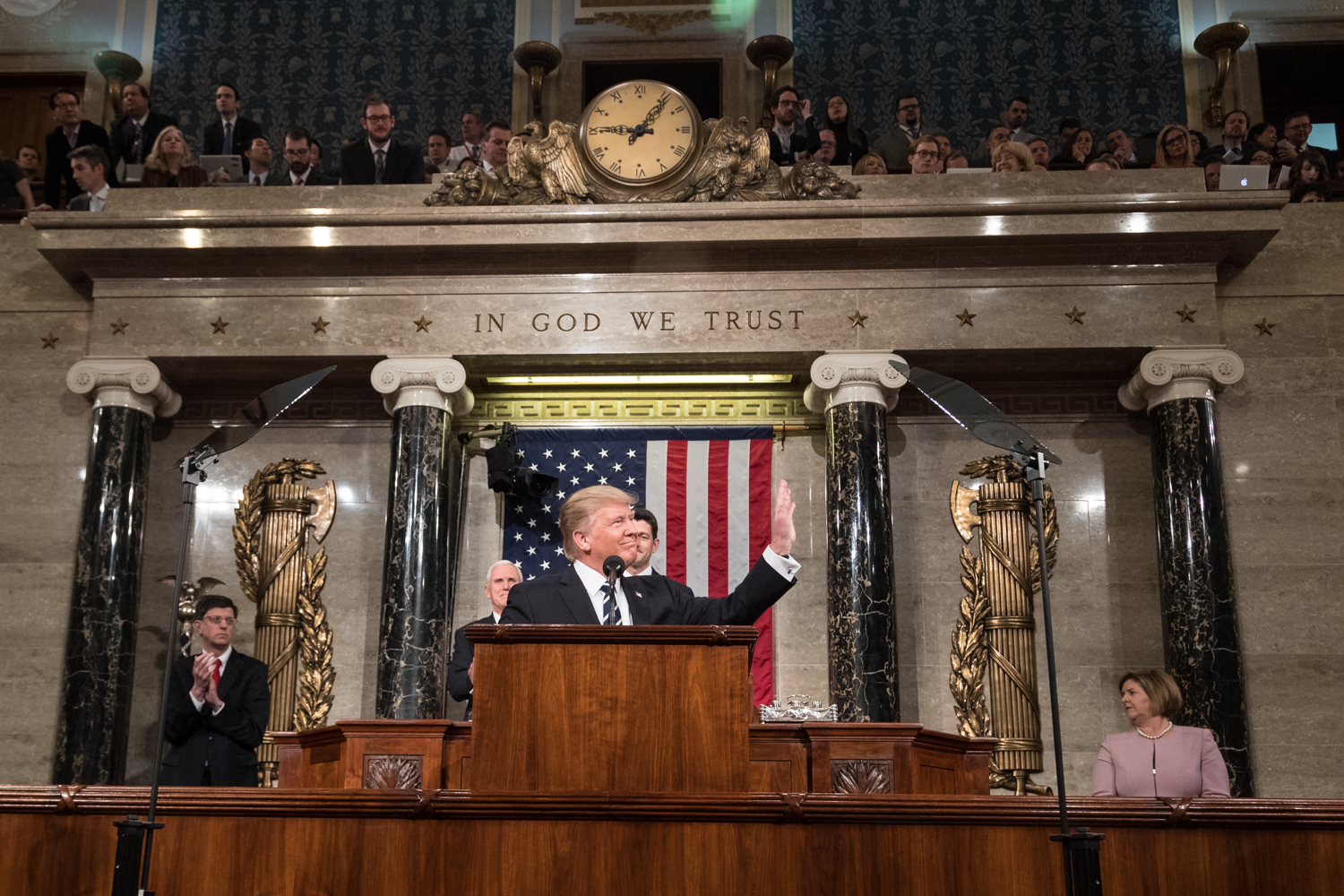
By Jackie Sedley

On Jan. 30, President Trump delivered his first State of the Union Address to an audience of roughly 45.6 million viewers. I was not one of them.
The speech clocked in at an hour and 20 minutes, the third-longest in history behind two from President Clinton.
For the first hour, Trump focused on domestic policy and hardly deflected from the nation’s internal affairs. He called upon the audience to work toward bipartisanship between the country and Congress, and to bridge the gap between political parties.
Trump also called for Congress to take up a new massive infrastructure bill and implement his newly formed immigration compromises. His announcement to keep the Guantanamo Bay prison in Cuba open reinforced Trump’s incessant desire to erase any remnants of Obama’s two terms. Finally, he pointed out that “Americans are dreamers, too” and used this as justification to prioritize the protection of Americans over immigrants.
According to cnn.com, roughly 80 percent of Trump’s speech was spent acknowledging his past accomplishments, with the remaining 20 percent discussing future plans of action.
Instead of partaking in the endless babble of propaganda and media-based techniques that aim to manipulate and deter the viewer from focusing on true content, reading transcripts allows for better understanding and room to form opinions. This also avoids contributing to the ratings that often inflate Trump’s ego.
Whether we as a nation like to acknowledge it or not, our current president gained his claim to fame as a reality star. Therefore, President Trump has a basic understanding of acting and the techniques used to draw in an audience. Moreover, Trump knows how to distract viewers through tone, cadence, delivery, facial expressions and other persuasive techniques.
As Trump spends most of the time and energy reserved for his political agenda on perfecting his image, one may find oneself easily cast under the spell of these tactics. Whether his authoritarian voice and aggressive mannerisms attract or repulse a viewer, these characteristics nonetheless succeed in distracting from the actual topics addressed within the content of the speech itself.
Trump’s speech also included several attempts to deflect viewers’ attentiveness to detail. Perhaps most significantly was his acknowledgment of 16 audience members who had experienced loss or suffering, woven throughout the speech. These addresses instill the idea of selflessness into Trump’s character, which may temporarily absolve any doubt or frustration felt by a viewer after hearing a particularly controversial point within the speech.
When reading transcripts, all of these distraction tactics become obsolete. While some transcripts include phrases in all capital letters to express the intensity of delivery — which arguably serve to further my point — delivery can no longer influence comprehension. On paper, perceptions are less hazy and skewed by a fog of deception.
This by no means suggests complacency. Just because I choose to abstain from watching his speeches directly, I still feel as though Trump’s actions warrant awareness. However, history has proven that change occurs most profoundly where resistance is implemented.
Through giving the president viewership, one is indirectly enabling Trump’s mockery of the presidential platform by putting him under the misconception that views equate to support.
Overall, removing the superficial components enables one to allow reason and personal judgment to take the reins. So, while President Trump and his surplus of spectacles may be a substantial source of comical entertainment, using one’s literacy skills may be the only way to fully comprehend Trump without interference.
